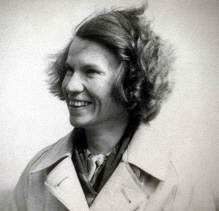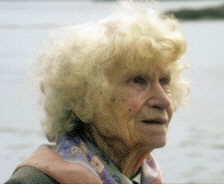WHEN a young American girl arrived at Helensburgh’s St Bride’s School in 1921, it was the surprising start of a life’s work in Gaelic folklore.
Dr Margaret Fay Shaw, who died in 2004 at the age of 101, was one of the most notable collectors of authentic Scottish Gaelic song and traditions in the 20th century.
Of Scottish Presbyterian and liberal New England stock, Margaret, who was born in Glenshaw, Pennsylvania, was the youngest of five sisters. Her first love was for the piano and she continued to play throughout her life.
Her family owned a steel foundry in Pittsburgh and her parents were cultured people. But by the age of 11, however, she was orphaned and obliged to develop the independence of character which led her into a life far removed from her upbringing.
At the age of 16 and at the suggestion of a Scottish family friend, she made her first visit to Scotland to spend a year as a boarder at St Bride’s, now part of Lomond School.
A recital at the school by well known Scottish folk song collector Marjory Kennedy-Fraser, who sang her ‘Songs of the Hebrides’, awakened Margaret’s interest, and she decided to learn the songs for herself. She went on to study music in New York and Paris.
Wanting to hear more, in 1924 she returned to Britain and began a marathon bicycle journey, which started in Oxford and ended on the Isle of Skye, where she stayed for a month.
It was during this trip that she began to use photography to earn a living, selling prints to newspapers, and magazines such as the Listener. The 5ft 1in tall American used a heavy Graflex 4x5 inch camera and a 17 inch lens, to which she later added a 16mm movie camera.
From 1929-35 she lived with singer sisters Mairi and Peigi MacRae in their thatched cottage at North Glendale, near Lochboisdale in South Uist, and they became lifelong friends.
There she both learned Gaelic and, one rainy evening in 1934 in the Lochboisdale Hotel, met the man who would become her husband, folklorist John Lorne Campbell from Argyll.
 They married a year later and together helped to rescue vast quantities of traditional poems and songs from oblivion. They made their home at Northbay on the island of Barra in a small corrugated iron house — with her Steinway grand piano.
They married a year later and together helped to rescue vast quantities of traditional poems and songs from oblivion. They made their home at Northbay on the island of Barra in a small corrugated iron house — with her Steinway grand piano.
Their friends included the famous novelist and nationalist, Compton Mackenzie, of Whisky Galore and Monarch of the Glen fame.
Margaret was an outstanding photographer, and both her still pictures and cinematography contributed to an invaluable archive of island life in the 1930s. She also photographed the Aran Islands, Mingulay, and the people of St Kilda at the time of the island's evacuation.
Her most important published work was Folksongs And Folklore Of South Uist, which has never been out of print since it was first published in full by Routledge and Kegan Paul in 1955.
This book is both a scholarly presentation of the songs and folklore which she had written down during her sojourn on the island, and also an invaluable description of life in a small crofting community during the 1930s.
This classic work is considered the centrepiece of her career, though she also wrote several other books, including an autobiography, From The Alleghenies To The Hebrides, in 1993.
In 1938, the couple bought the island of Canna, where they lived for the rest of their lives. In 1981 they presented the island to the National Trust for Scotland, but continued to live there. Her husband died in 1996.
 Margaret continued to travel regularly to America until her late 90s. On her 100th birthday the island community were invited to a party, and she played Strauss waltzes and Uist lullabies. A BBC TV programme was made to mark the occasion.
Margaret continued to travel regularly to America until her late 90s. On her 100th birthday the island community were invited to a party, and she played Strauss waltzes and Uist lullabies. A BBC TV programme was made to mark the occasion.
A few weeks after her 101st birthday she had a minor fall and was taken to the Belford Hospital in Fort William, but she faded quickly and died on the evening of December 11. She is buried in Hallan cemetery in South Uist, beside the Macrae sisters.
Her Steinway piano, which she brought to Canna when they moved there, is still in Canna House, and in August 2009 the National Trust for Scotland hired a piano tuner to travel to the island to tune the 109 year-old instrument which is now valued at £100,000.
Margaret is pictured receiving one of her four honorary degrees, from St Francis Xavier’s College in Nova Scotia, Canada, in earlier years, and in her 90s.